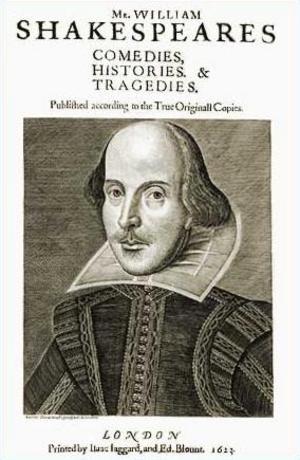To fit a love story from beginning to end in one play requires that people fall in love within minutes of meeting each other so they can have a few conflicts and still get married by the end of the hour and a half show. Trevor Nunn, the director of the newest movie version of the play Twelfth Night, added more romance between the characters that were falling in love so that a contemporary audience would accept that love as being legitimate.
Falling in love instantly was accepted in the entertainment business in the late 1500’s to early 1600’s, the time in which Shakespeare wrote his plays. To get to the really entertaining parts of a play they had to go through the necessary parts of people falling in love and having that done instantly was normal practice. Nowadays the audience demands to know why for everything, especially relationships. Answers are demanded in today’s culture, and combining Shakespearean love with modern love usually needs some alterations for the contemporary audience to accept it. Trevor Nunn altered the circumstances surrounding the Shakespearean dialogue just enough to add to the romantic parts of Twelfth Night without taking too much liberty with the work.
In the beginning of the play Viola becomes Cesario and starts working for Duke Orsino. Orsino whines and pines, but it is never mentioned that he is injured in any fashion other than his heart. In Nunn’s version his arm is in a sling for his first two scenes (adapted from 1.4), until he gets Cesario to go to Olivia’s. Nunn uses this injury for two functions, to add a slightly romantic air to the two characters and to add a reason for Cesario to go to Olivia’s when she didn’t want to. The romantic air comes from the ‘Nightingale effect’, where the common conception is that girls fall in love with men who are sick or hurt because they need help. The scene where Orsino asks Cesario to go and proclaim the Duke’s love for Olivia is set with just those two sitting on rocks overlooking the sea in the almost dark. Them being alone in what is considered to be a typically romantic setting adds to the budding romance, along with the deep looks of longing Nunn has Cesario throw at Orsino when the Duke isn’t looking. Cesario doesn’t want to go to Olivia’s however, but seems to agree after she pushes Orsino in a playful manner and he falls on his injured arm. The added incentive was needed for modern audiences to accept that a girl who loves a man and doesn’t want to proclaim that man’s love for another woman would actually go and do it if she felt guilty for hurting him in some way, whether emotionally or physically.
Another scene where Nunn enhances the background love between Orsino and Cesario is when the two listen to Feste sing (2.4.50-65). In the written version there are others present to Feste’s song, mainly Curio (who even has lines) and some men from Orsino’s court. Nunn takes all the extras out so that it is yet another private moment for the two. The scene is set in a barn on a stormy night with just enough light to make the mood seem romantic again. Feste sings a love song and through its course Orsino and Cesario get very close and almost kiss. Their lips even touch a bit before they break apart at the end of the song. They may be two males to Orsino and Feste, yet the reader/audience knows that Cesario is a woman, and so they see a great desire forming between the two. The audience is willing to disregard the fact that Orsino almost kissed what he thought to be a boy because they want to see the two characters falling in love.
One of the other main relationships is between Cesario and Olivia. Olivia falls in love with Cesario, yet Cesario loves Orsino. How then, does Olivia fall in love with Cesario when he is not putting the moves on her at all? In part it is how it is played out, as Nunn shows. Cesario gets very close to Olivia in the portrayal of act one, scene five. in the physical sense, which was something not allowed at the time. Cesario is saying very sweet things put down for him from Shakespeare, yet in the movie has him constantly close to her, sitting directly beside her and face to face in a very intimate manner. In one of these face to face moments Nunn has Olivia look at Cesario in the most longing way that the audience knows she is starting to like him, yet this is before Cesario goes on about how he would show his love to her if he were in love with her. So Olivia is starting to fall for him before the love words are spoken, thus the physical action between the two is a main, believable cause.
Sebastian and Olivia are the final relationship formed in the play and the movie, and so the director doesn’t spend quite as much extra time in making their love seem deeper than it is, especially since one side of the relationship is already established by Olivia being in love with Cesario whom she mistakes Sebastian to be. Nunn does however add just enough of a romantic gesture for the viewer to accept this quickly sprung love. In act four, scene one Olivia rushes to the aide of Sebastian thinking him Cesario and chases off Toby and Andrew with harsh words. In the movie she runs and throws herself in front of Sebastian, protecting him. This surprises Sebastian and it shows on his face. It isn’t much, but it’s enough for the audience to get that he’s awed into love by not just by her beauty, but also by her selflessness.
Of the lesser love roles in the play, the one that seems to have been changed the most by Nunn was that of Maria and Sir Toby. Though Toby has many lines where he proclaims love like things, it never shows that he meant them to be real. He proclaims early on in the play “I could marry this wench for this device” (2.5.158) and “Shall I play my freedom at tray-trip, and become thy bondslave?” (2.5.165-6). These could be taken to be romantic overtures, but jesting is the more likely conclusion. In the theatrical version there are several elements added to the Toby/Maria relationship. Maria is portrayed as an older woman who longs for love when she starts to sing the sad love song with Feste. Nunn has several looks go between the two – longing from Maria and a budding awareness of Toby’s. The main romance between the two that is not in the written version, however, is caught when Toby exuberantly gathers Maria up in a lustful kiss near the end of the movie that was not in the written version. The only conclusion in the play on their relationship is Fabian saying “Maria writ / The letter, at Sir Toby’s great importance, / In recompense whereof he hath married her” (5.1.351-3) to Olivia in an explanation of what happened to Malvolio. In the movie they show in the final scenes Maria and Toby getting into the wedding carriage together, thus fulfilling their relationship for the viewers as the play did not.
There are naturally things that would happen in an acted out play as well as a movie, like looks of longing from one character in love to another, but in this particular version of Twelfth Night Nunn adds so much more than that for modern audiences to understand and accept more easily a Shakespearean love. He adds in more romance, more relationship, more intimacy, and more love.
Works Cited
Nunn, Trevor, dir. Twelfth Night, or What You Will. Renaissance Films, 1996.
Shakespeare, William. Twelfth Night, or What You Will. The Norton Shakespeare: Based on the Oxford Edition. Ed. Greenblatt, Stephen. New York: Norton, 1997. 1761 – 1821.




